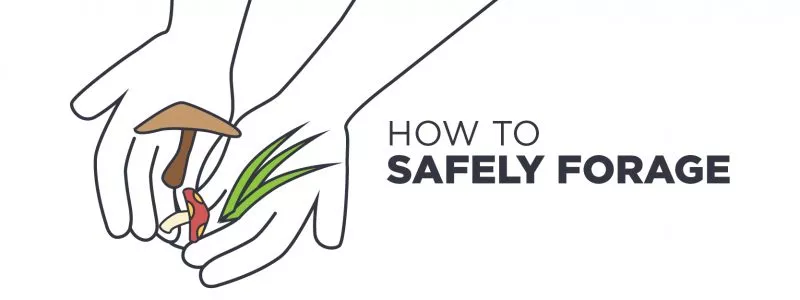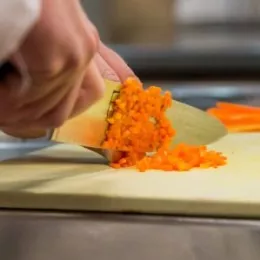Foraging comes with many recommendations, tips and tricks to be able to forage safely. While foraging is an amazing way to connect with food and bring local ingredients to your table, there are some rules to follow before venturing into the woods or your own backyard.
In order to have a successful foraging experience check out a few of our top tips to keep you safe while on your foraging adventures!
- Don’t take more than you need. In order for generations of future foragers to enjoy these gems of nature, only take what you need and will use. Most of the time, edible plants and wild mushrooms have a short shelf life, so if you don’t plan on cooking with it immediately or preserving it, it’s best practice to leave most of what you find behind.
- Don’t harvest in questionable areas. Especially if you live in a city, toxic areas can be abundant and are best to avoid. Toxic areas include anywhere that might have been sprayed with pesticides, near or around dog parks, or along busy roadways. These areas can make edible plants no longer edible.
- Don’t forage plants that appear unhealthy. This seems like an obvious statement, but plants that don’t look like their normal, healthy selves are not safe to eat. This will depend from plant to plant, so always be familiar with a plant’s healthy appearance and discuss with your foraging mentor or expert before foraging.
 Don’t forage alone. Foraging is an activity that is best, and safest, when done in groups. Whether it’s a tour group, with a mentor or a friend, be sure to grab your foraging buddy before venturing into the wild. Two sets of eyes are always better than one and can help to ensure that you are safely foraging. One of the best ways to work in a kitchen is in a team, and the same can be said for foraging!
Don’t forage alone. Foraging is an activity that is best, and safest, when done in groups. Whether it’s a tour group, with a mentor or a friend, be sure to grab your foraging buddy before venturing into the wild. Two sets of eyes are always better than one and can help to ensure that you are safely foraging. One of the best ways to work in a kitchen is in a team, and the same can be said for foraging!- Consult with an expert before you eat anything. Send pictures to your mentor or expert and have them double check what you have found.
- Always consume small quantities to ensure that you are not allergic to anything first. When ingredients are found in the wild, you never know what you could be allergic to.
While these are just four of the top tips to safely forage, there are many different elements to foraging that haven’t been covered here. Always do your research, be prepared with gloves and warm clothing, and bring paper bags to store your edible plants and mushrooms. Foraging is a perfect group activity and takes years of experience, and knowledge, to perfect.
This blog post was originally published by the International Culinary Center (ICC), founded as The French Culinary Institute (FCI). In 2020, ICE and ICC came together on one strong and dynamic national platform at ICE's campuses in New York City and Los Angeles. Explore your culinary education where the legacy lives on.



